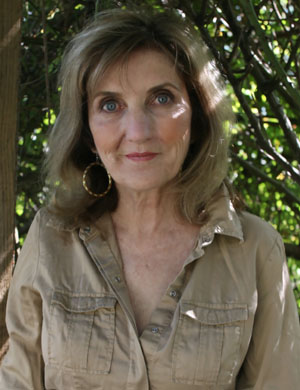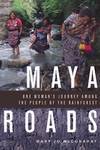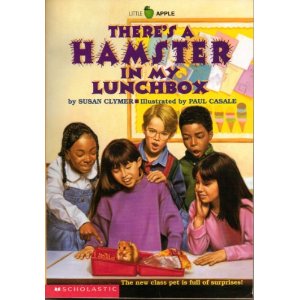
After reading Mary Jo McConahay’s book, Maya Roads: One Woman’s Journey Among the People of the Rainforest (Chicago Review Press), I wanted nothing more than to get on an airplane bound for Guatemala, hop on a bus headed to the country’s interior, and begin exploring. In Maya Roads, Mary Jo creates a vivid account of her experiences by drawing on her three decades of traveling, working, and living in Central America. Of the book, Peabody Award-winner Richard Rodriguez (author, Brown: the Last Discovery of America) wrote, “From enchanted jungles at the center of the Americas all the way to military roadblocks and nightmare massacres, [McConahay is] the best sort of guide… I cannot imagine a better chronicler of this time and place.” Laura Fraser (author, An Italian Affair and All Over the Map) said “From the moment Mary Jo McConahay steps into the deep Mexican jungle, you will follow her anywhere.”
Mary Jo began her career as a freelance journalist in Mexico; became a staff reporter for the Arab News, in Saudi Arabia; and reported for the Paris-based International Herald Tribune, and London-based economic magazines. She covered the Central American insurgencies for a decade for Pacific News Service, and U.S. newspapers such as the San Francisco Examiner and Chronicle. Mary Jo’s work has been published in Time, Newsweek, Vogue, Rolling Stone, Ms., Salon, Sierra, Los Angeles Times Magazine, Parenting, The Progressive, National Catholic Reporter, and more than two dozen other magazines and periodicals. She may be best known to adoptive parents as the co-producer of Discovering Dominga, a documentary about a 27-year-old woman born in Guatemala who was adopted at age 11 by American parents, after surviving a massacre on her Maya village.

Recently, I caught up with Mary Jo to ask her a few questions about Maya Roads: One Woman’s Journey Among the People of the Rainforest. She responded via email from Antigua, Guatemala.
I agree with Don George of National Geographic Traveler, who said of Maya Roads: “In its hungry passion and wide-eyed wonder, it’s an extraordinary literary journey and a moving testament to a region and a life.” Can you talk a little about where your passion for the Maya people, archaeology, and rainforest originates?
When I was in my twenties, studying Spanish in Mexico, I saw a museum exhibit about the Lacandon Maya Indians who still wore their hair long, hunted with bow and arrow, and were said to live much as their ancestors had lived in the remote southern jungles of Chiapas. The idea fascinated my romantic mind, and I set out on a whim to visit them. The beauty of the Maya rainforest, its dense and varied forms of life, the remains of the magnificent pre-Columbian cities — all of it captured my imagination and never let go. Over many years as a journalist and resident of Guatemala, and through friendships, I came to know better the reality of the lives of modern Maya. I continue to admire their traditions and ancient history, but even more now I respect how the Maya survived recent incidents of genocide at the hands of a brutal army, their push for education, and the movement toward a pan-Mayanism that demands recognition of indigenous rights and customs.
You have a long history with Guatemala and Central America, covering the region as a war correspondent, and living with your husband and daughter in Antigua for 11 years. In the years since you’ve known Guatemala, what changes have you witnessed?
When we first moved to Antigua as a family in the late 1980s, we knew everybody by first name in the “foreign” community, often Europeans or North Americans who had made their lives here. A post-war business and investment boom has changed all that, with many newcomers. Increased security also means increased tourism country-wide, which is great for the economy; Guatemalans invest more in their own country now than before with businesses springing up big and small. The atmosphere of militarization, thankfully, with soldiers in camouflage ubiquitous, seems gone. A huge change is an improvement in communication. There were so few phones in the first years we communicated with our friends in some towns by telegram, which had to be translated into Spanish before sending for security reasons (“How about dinner Friday?”). Now it seems every Guatemalan has a cel, and the country is wired. It’s wonderful.
What advice do you have for someone who would like to follow in your footsteps today and explore areas in Guatemala not on the usual “tourist path.”
Be smart, as you would traveling anywhere, but don’t let excessive caution cauterize your curiosity. We just watched the sun rise at a little-visited Maya site near Tapachula, Mexico, then took a 7-hour bus ride along the coast to reach Guatemala City. From here in Antigua where we are on a family visit, our daughter, now 25, and her boyfriend made a recent shuttle trip to Lake Atitlan and visited its small villages with local boatmen. They took a day to climb Pacaya volcano. Start easy and make sure you speak a little Spanish — it’s not hard to memorize a short list of words at least, which can make a big difference in your journey.
You interviewed Rigoberta Menchu in 1992, on the day the Nobel Peace Prize committee announced her name as the 1992 recipient. How did that come about? Any impressions you can share?
Rumors had been floating that Rigoberta could receive the prize, although she was considered a long shot, but I calculated the time difference from Oslo and set my alarm in a San Salvador hotel room for 4:00 a.m., just in case. When it rang I opened my eyes, pressed the remote and bang, there was her round, smiling face. I didn’t even listen to the announcement, raced madly to catch the first flight to Guatemala City, where on board I was lucky enough to get quotes from some government figures who hadn’t heard the news. I went to the headquarters of the indigenous widows organization where I knew Rigoberta had to come sooner or later, and she did. There were so many well-wishers, in every sort of Maya traditional dress, and many non-Maya too, that it was impossible to talk, so we climbed up to the roof overlooking the city and volcano. Someone brought the new Nobel Laureate a cold beer and we had a wonderful interview. Soon enough a party of the widows found us, somebody put on a marimba casette, and I left her on the roof dancing the elegant son with the other women.
While writing the book, did you learn anything about Guatemala or the Maya that surprised you?
No outright surprises, but many unexpected delights, and entries into corners of recent history that had been fairly hidden. I saw that social and political resistance by indigenous such as we have seen in our lifetime is not unique, but part of a cycle that will not end until the chance for a dignified life is available to all, Maya and non-Maya.
Do you have any projects currently?
I continue to do readings and speak on the world of Maya Roads, including for book clubs, churches and interest groups. At the same time, I am working on a book about Allied and Nazi espionage and counterintelligence in Latin America during World War II, a time when much of this hemisphere admired fascism. Having seen it up close, I live appalled by the human cost of any war, and I’m moved to know more about the motivation and history of those who participated in the big one, from Brownsville to Brazil. I’m making some interesting discoveries.
Learn more about Mary Jo at her website, maryjomcconahay.com; and about her new book at mayaroads.com.


 ShareThis
ShareThis




 ShareThis
ShareThis


